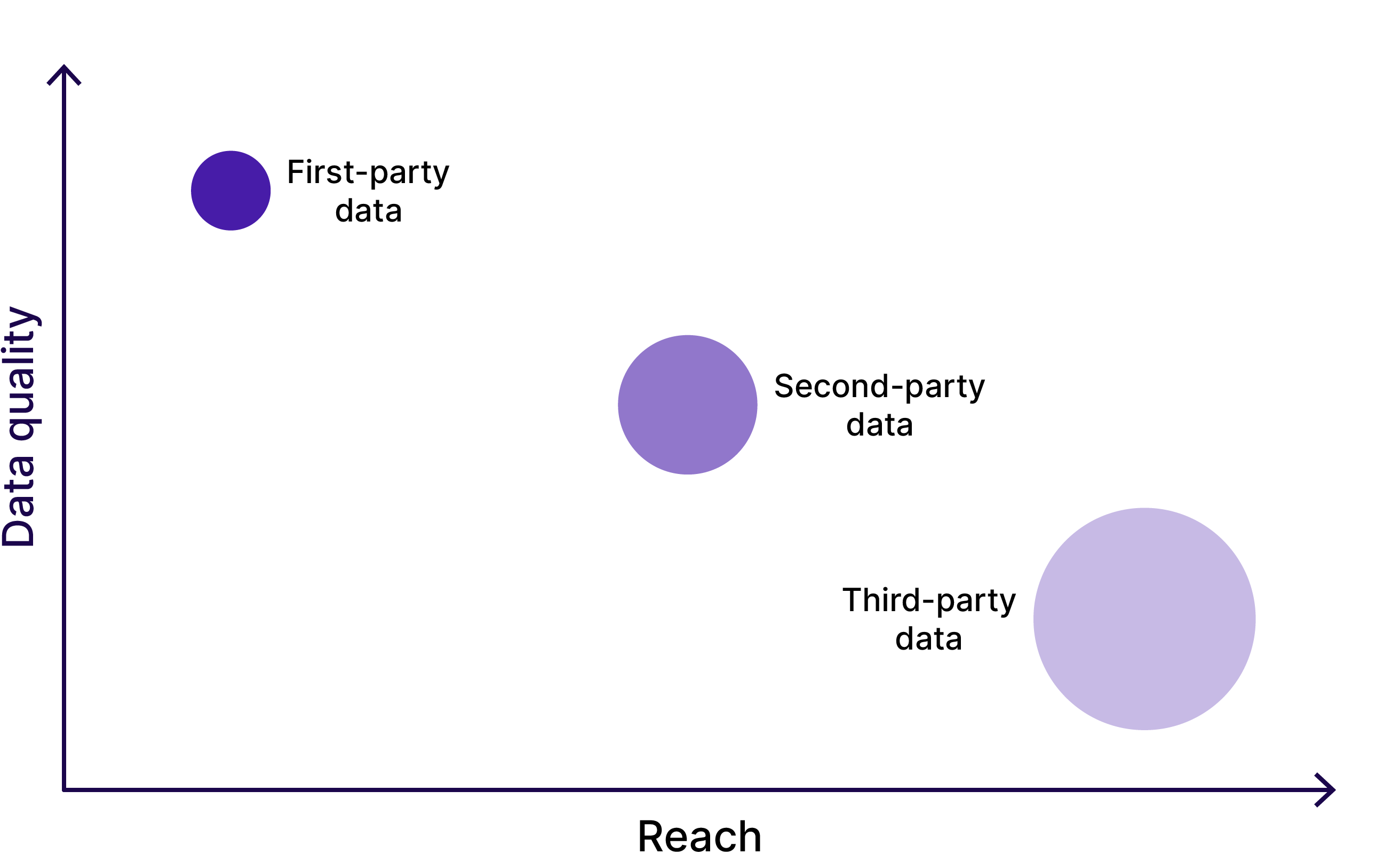Make First-Party Data Your Superpower
An introduction to first-party data and practical examples to turn it into a competitive edge.

‘Data is the new oil’ is, by now, a well-worn trope of the modern digital age. Like many clichés, however, it’s also largely true.
The world’s biggest companies — even the ones that make billions by selling smartphones — collect and store figurative mountains of data about how their users interact with their products. Of course, it’s not the data itself that has these companies so excited. Much like oil, the value is in what they can do with it.
For media publishers and other content-driven sites wanting to build a holistic commerce strategy, understanding what data is useful and how it can be utilized is not always immediately obvious.
By bringing the shopping journey on-site within the content itself, Carted enables publishers to own the entire commerce experience and unlock highly-actionable, revenue-driving, first-party data.
In this article we’ll deep-dive into these questions and provide practical examples of how to turn first-party data into a competitive edge.
What is first-party data, anyway?
The differences between first-, second-, and third-party data are most easily conceptualized as an increasing distance between your users (or potential users) that generate the data, and the business collecting that information.
Increased separation means greater reach at the expense of reduced quality — both in accuracy and relevance.

First-party data is collected by a company about its own users and their interactions with the company’s products or services.
It’s highly likely that you’re already collecting thousands of first-party data points each day, including page analytics, subscribed users, on-site feature interactions, and much more. The direct connection between your business and the user means that first-party is the most accurate and actionable, and the best defense against privacy-focused changes to browsers and devices.
The best data is the data you use
All the first-party data in the world will make no difference if it’s never used to derive visitor insights, acquire new users, drive engagement through a more personalized, effective product, and ultimately, increase revenue for your business.
The most useful data is that which relates to a user’s intentions, interests, or preferences that can be used to more effectively address the needs or pain points of specific users. For product managers, marketers, and editors, this information can be used to craft more personalized content and messaging that is most likely to resonate with that user — in turn, leading to improved business outcomes.
Meanwhile, deeper insights into audience demographics and brand affinities arm ad revenue and sponsored content teams with the ability to refine their focus on the most well-aligned advertisers which yield the best rates.
Lastly, identifying previously anonymous visitors is without doubt the most actionable form of first-party data. Visitor email addresses remain an incredibly powerful way to nurture new and existing customer relationships — across a company’s various products and across devices. The ability to tie user-specific behavioral insights to both a unique identifier and form of contact allows publishers to engage those visitors with direct, personalized communications.
Don’t let high-intent data go to waste
Affiliate-enhanced content is a potential treasure trove of high-intent visitor data. Visitors reading and engaging with buying guides and similar content are expressing clear preferences to product categories, brands, and specific products with the intention to make a purchase in the near future.
Unfortunately, with the traditional link-out affiliate content model, this is a missed opportunity. Publishers have limited visibility into the actions those visitors take off-site, and even if they did, have no ability to connect that information to a known user.
First-party data in action
With a solid understanding of what makes it valuable, the below are 5 practical uses of first-party data that content-led businesses can adopt.
1. Guide known visitors towards more lucrative revenue channels
Many publishers have begun to support their revenue with subscription-based access to content, or even additional products and services that exist parallel to the traditional content business.
First-party data that includes email addresses (or other contact details) enrich other interest, intent, or preference data points that have previously been collected for an anonymous user.
The combination of this enriched data within a Customer Data Platform (CDP) enables revenue teams to tailor messaging and value propositions to most effectively move those visitors into paying customers — all without the expense of needing to acquire that user again through paid channels.
2. Guard against the death of the cookie
With browsers moving forward with same-site cookie protections to combat cross-site tracking, the importance of first-party data that is collected and controlled directly by publishers has grown.
Similarly to the point above, unique user identifiers such as email addresses enable marketers to take advantage of additional tools such as Meta’s Advanced Matching to regain some of the relevancy in their ad audiences that was lost with the introduction of cross-site cookie restrictions.
3. Create personalized experiences
Even publishers that focus on the narrowest of content niches will have segments of their audience that engage with different types of content or content topics. As social media content algorithms have shown, personalized — rather than one-size-fits-all — curation of content is critical to visitor engagement.
Using first-party data, and especially high-intent data from commerce, publishers can tailor the content shown on their website based on a given user’s interests. Personalized home page for you sections or more relevant related content alongside articles are just two ways that this can manifest into a more engaging visitor experience.
With more engagement, publishers can drive increased session metrics such as time on page, pages per session, and increased session frequency.
4. Create more effective commerce content
Currently, affiliate-enhanced commerce content does not provide much in the way of behavioral data that can assist editors in producing more engaging articles. It is difficult to connect data provided by affiliate networks to on-site user journeys, and especially to visitor acquisition channels that originated those sessions.
With commerce brought on-site, publishers are able to track how their visitors engage with products right through to purchase, as they can with other on-site features. This enables a full view of the shopping journey and the ability to derive useful insights into which categories, brands, and products drive the most engagement.
5. Make more impactful pitches to advertisers
Publisher advertising revenue is often divided into programmatic display advertising and direct-sold placements.
Enriching the quality of first-party data with high-intent behavioral information as well as detailed demographic data that can be obtained through on-site checkout, publisher revenue teams are empowered to provide advertisers with more accurate, compelling audience insights.
As advertisers chase improved return on ad spend, publishers that can best demonstrate audience relevance will be able to demand higher placement fees for access to that audience.
Schedule a demo
If you're looking to supercharge your first-party data with on-site checkout, our team is ready to chat.
Express your interest today and we’ll be in touch to provide your team with a demo.

